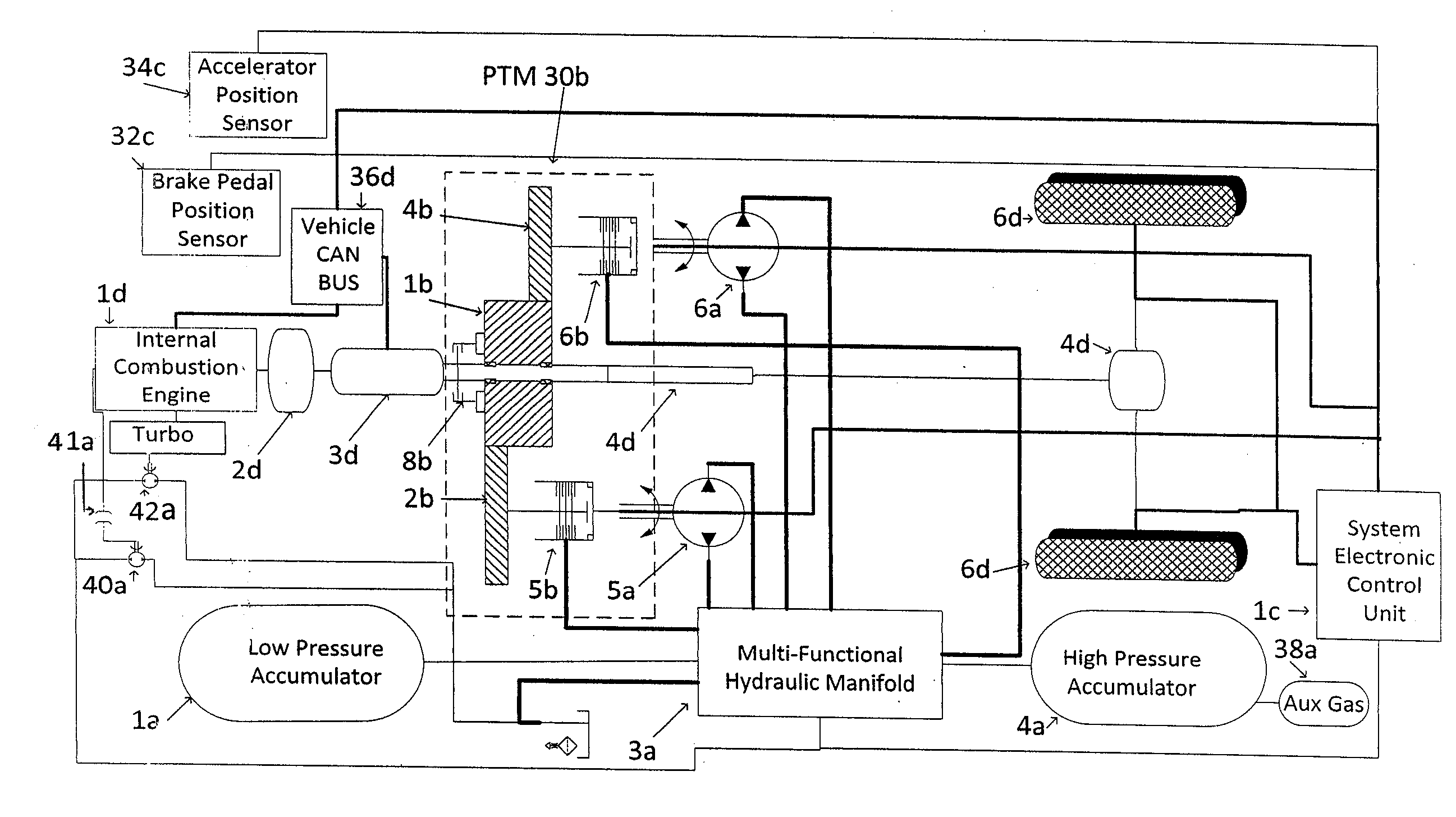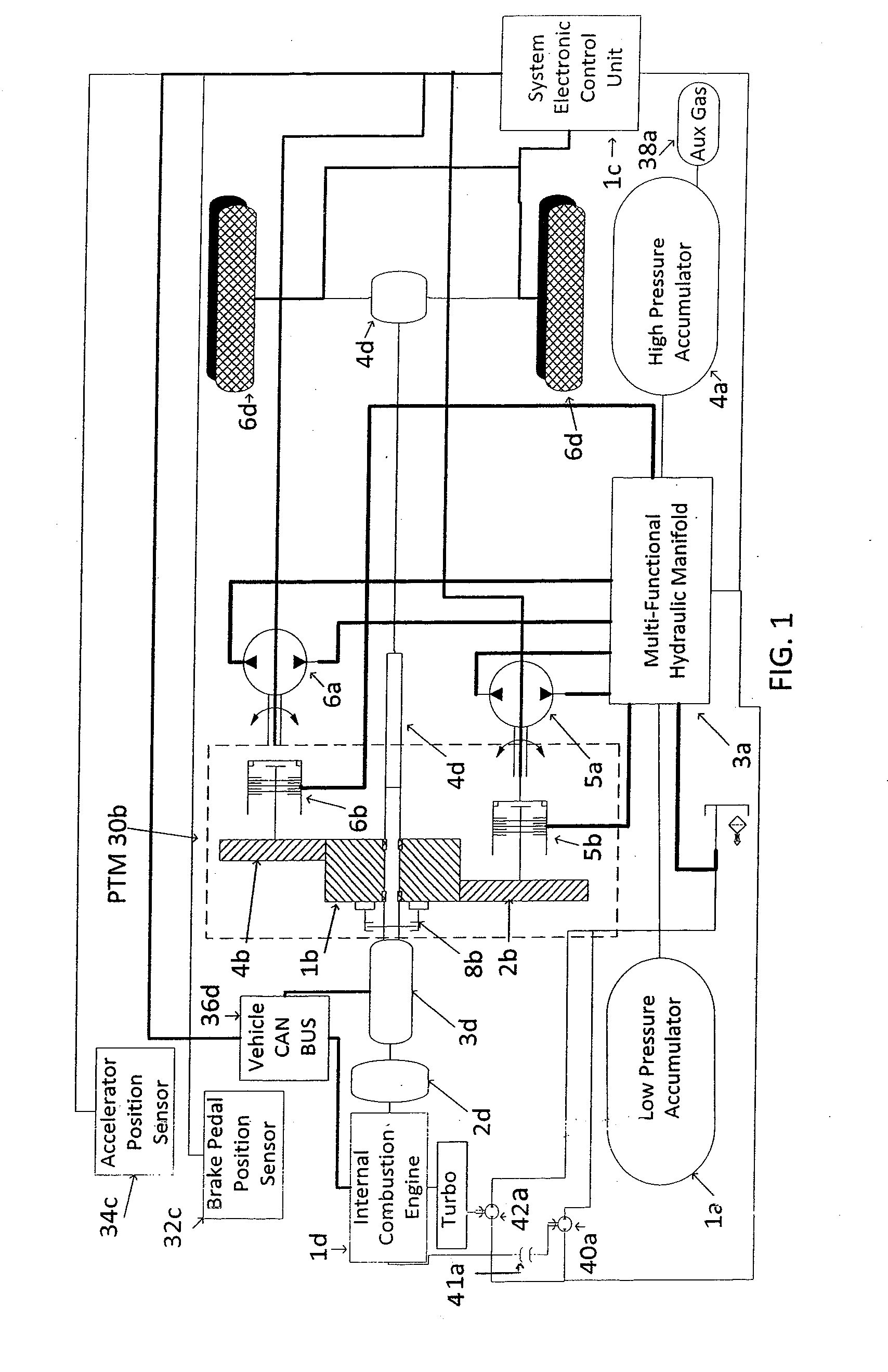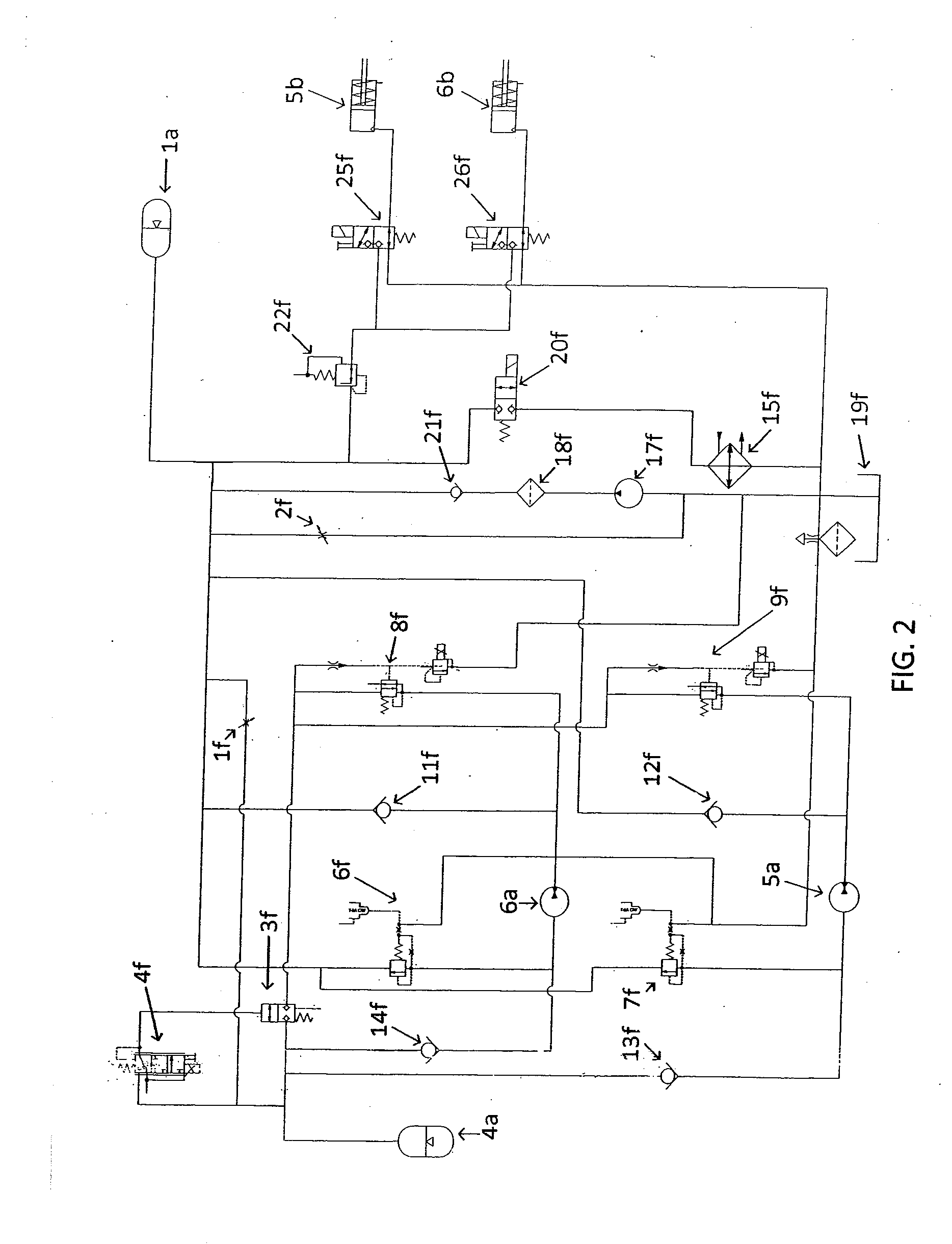Hydraulic regeneration apparatus
a technology of energy regeneration and apparatus, applied in mechanical apparatus, transportation and packaging, jet propulsion mounting, etc., can solve the problems of slow vehicle, difficult optimization of energy recovery through discrete components, and faster fuel consumption of trucks, so as to maximize fuel economy and reduce energy
- Summary
- Abstract
- Description
- Claims
- Application Information
AI Technical Summary
Benefits of technology
Problems solved by technology
Method used
Image
Examples
example 1
[0049]Embodiments of the present invention may operate in one of three modes. In the first mode, the hydraulic components of the system are completely decoupled from the existing driveline through hydraulically activated clutches 5b and 6b. In this mode the only components in the system that are active are sun gear 1b and the two planetary gears 2b and 4b. In the configuration shown, any time that the drive shaft 4d is rotating, sun gear 1b and planet gears 2b and 4b will also rotate. If included, the high torque, dog-clutch 8b decouples the mechanical components of the system from the existing drive-line in the event of a failure or in instances where long over the road travel is required without stops and starts which limits the effectiveness of the present invention. The mode in which only the sun gear and planet gears are turning is referred to as hydraulic idle mode. If clutches 5b and 6b are engaged, the hydraulic pump / motors 5a and 6a will be rotating as well. Further, if the...
example 2
[0050]The second mode, referred to as the braking mode, occurs when one pump / motor unit or some combination of all of the pump / motor units absorbs power transferred from wheels 6d through differential 5d through driveshaft 4d to sun gear 1b. When a driver depresses the brake pedal, the system's electronic control unit 1c measures the brake pedal position and determines how much deceleration the driver is requesting. That deceleration value is converted to a desired torque value calculated by measuring the difference in pressure between low pressure accumulator 1a and high pressure accumulator 4a. Control system 1c then determines which pump / motor 5a or 6a through its fixed mechanical gear ratio or which combination of pumps / motors 5a and / or 6a through their respective mechanical gear ratios, will provide approximately the negative braking torque that the driver is requesting. Once the appropriate selection has been made, the system's electronic control unit 1c commands multi-functio...
example 3
[0055]The third system mode is the motoring mode, where the fluid flows from high-pressure accumulator 4a to low pressure accumulator 1a and applies positive accelerating torque to the vehicle drive-shaft. By introducing high-pressure fluid to the inlets of the pump / motor units, the units produce torque which is transferred from pump / motor units 5a and / or 6a through hydraulically actuated clutches 5b and / or 6b to planet gears 2b and 4b, respectively, to sun gear 1b through driveshaft 4d to differential 5d, and finally to wheels 6d. In this mode of operation, system electronic control unit 1c again monitors the fluid pressure difference between high-pressure accumulator 4a of FIG. 1 and low-pressure accumulator 1a of FIG. 1. Control system 1c calculates the amount of available energy from the pressure difference between the high- and low-pressure accumulators, and which pump / motor combination may be used to meet the driver's demand. In this mode, control system 1c continuously monito...
PUM
 Login to View More
Login to View More Abstract
Description
Claims
Application Information
 Login to View More
Login to View More - R&D
- Intellectual Property
- Life Sciences
- Materials
- Tech Scout
- Unparalleled Data Quality
- Higher Quality Content
- 60% Fewer Hallucinations
Browse by: Latest US Patents, China's latest patents, Technical Efficacy Thesaurus, Application Domain, Technology Topic, Popular Technical Reports.
© 2025 PatSnap. All rights reserved.Legal|Privacy policy|Modern Slavery Act Transparency Statement|Sitemap|About US| Contact US: help@patsnap.com



